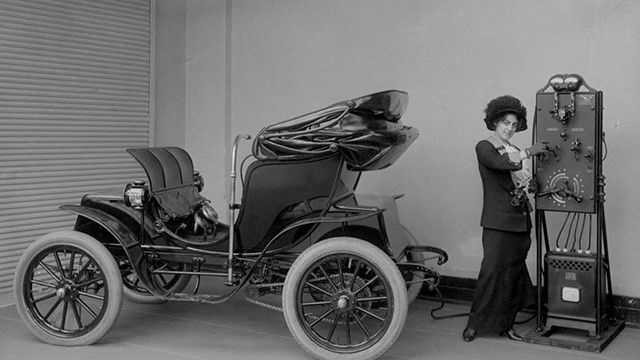The Spark That Ignited Progress: A History of Electric Vehicles

Electric vehicles, or EVs, are often seen as a product of the 21st century, a futuristic solution to the ecological crises spawned by traditional internal combustion engines. However, the inception of electric vehicles dates back over a century, with a history full of ups and downs, triumphs, and challenges.
Early Beginnings (1830-1890)
Contrary to popular belief, the idea of an electric vehicle didn’t sprout overnight. The first electric motor was developed around 1832 by Robert Anderson of Scotland. In the subsequent decades, more inventors, including Thomas Davenport and Robert Davidson, furthered Anderson’s work, creating practical applications such as electric trains.
Golden Age of Electric Vehicles (1890-1930)
The dawn of the 20th century witnessed the rise of EVs. In 1899 and 1900, electric vehicles held the land speed record. Notably, Thomas Parker, a British inventor, produced an electric vehicle in 1884 and is often credited with helping to popularize them.
In the U.S., the first successful electric car made its debut around 1890 thanks to chemist William Morrison. By 1900, electric cars were at their peak, accounting for around a third of all vehicles on the road. At the time, EVs were popular due to their simplicity, minimal noise, and lack of harmful emissions compared to their gas-powered counterparts.
Decline of Electric Vehicles (1930-1970)
Despite their early success, electric vehicles couldn’t compete with the rapid advancements in the internal combustion engine. The discovery of large petroleum reserves led to the cheap availability of gasoline, making gas-powered cars more economical. Furthermore, the initiation of electric starters by Cadillac in 1912 eliminated the need for the hand crank, a significant deterrent for gasoline vehicles. The mass production techniques of Henry Ford also made gas cars more affordable to the average consumer. By the 1930s, electric vehicles almost vanished from the roads.
Resurgence and Modern Era (1970-Present)
The oil crisis in the 1970s sparked a renewed interest in electric vehicles. High gasoline prices, coupled with growing awareness of environmental issues, prompted the need for alternatives. The U.S. Congress passed the Electric and Hybrid Vehicle Research, Development, and Demonstration Act in 1976, signaling governmental support for the development of electric vehicles.
Despite these advancements, electric vehicles still had limitations, especially in terms of range and speed. It wasn’t until the late 1990s and early 2000s, with the advent of lithium-ion batteries, that these issues began to be addressed effectively.
The modern era of electric vehicles arguably began with the introduction of the Toyota Prius in 1997, the first mass-produced hybrid car. However, it was Tesla’s Roadster, launched in 2008, that truly shook the industry. The Roadster demonstrated that electric cars could deliver high performance and long ranges, tackling the biggest criticisms aimed at electric vehicles.
Today, nearly all major automotive manufacturers are investing heavily in electric vehicle technology, spurred on by tightening emission regulations and a growing societal emphasis on sustainability. From the practical Nissan Leaf and Chevrolet Bolt to luxury vehicles like the Audi e-Tron and Jaguar I-Pace, the electric vehicle industry has grown leaps and bounds, offering choices for every segment of the market.